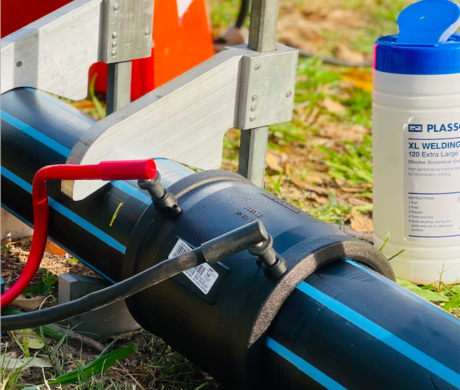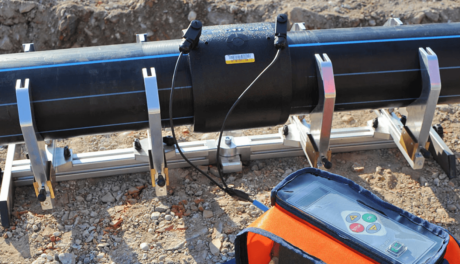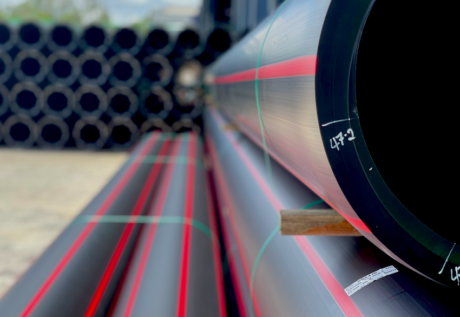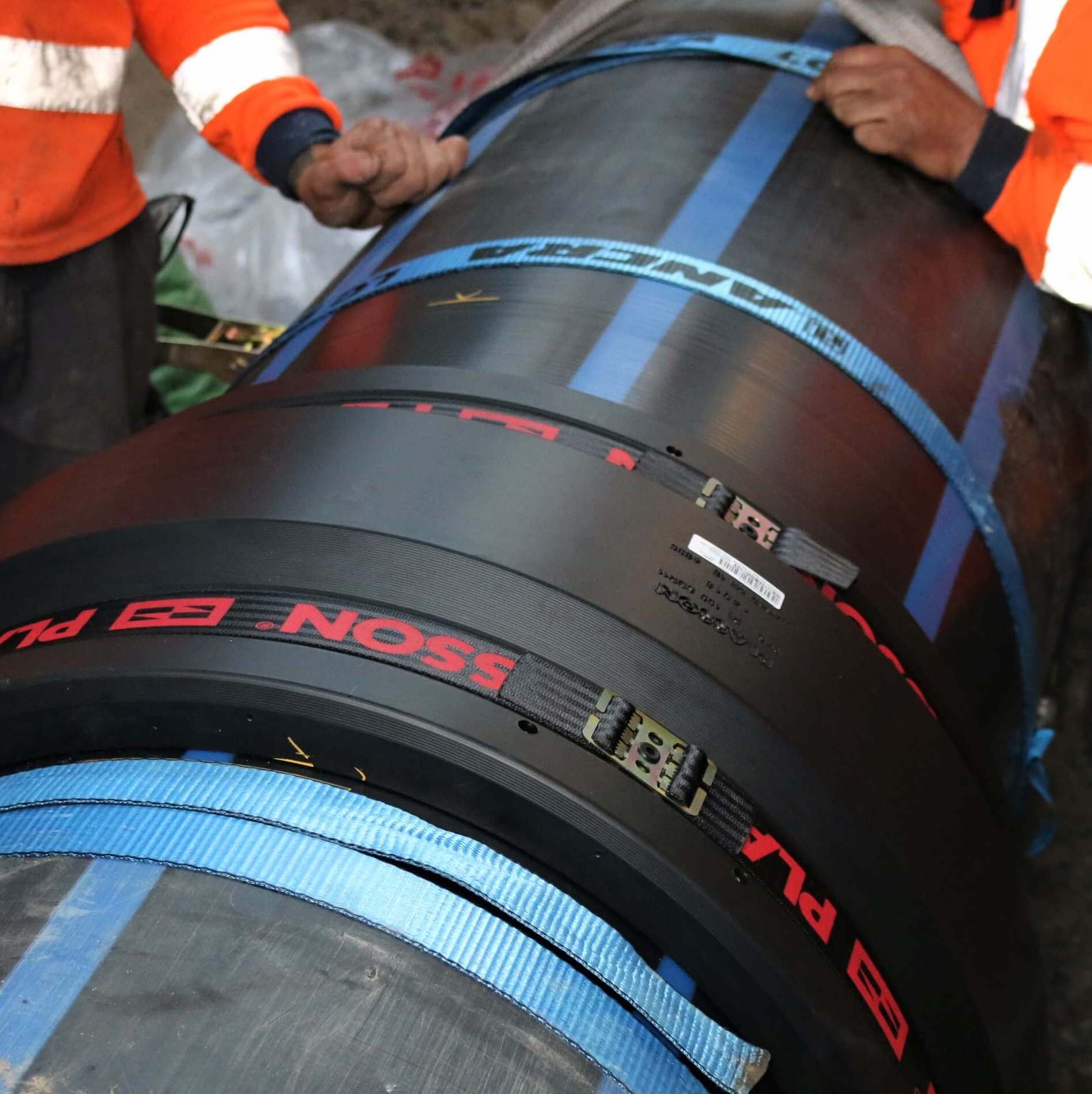Electrofusion, or EF for short, is a method of joining PE pipe in situations where butt fusion is not practicable, like where valves, elbows and tees need to be added.
Specialised electrofusion fittings have electrical heating coils molded inside them. When current is applied to the wires in EF fittings, heat is generated which gently melts the plastic of both the fitting and the pipe.

The plastic from both the surface of the pipe and the fitting are forced to mix together under pressure due to the design of EF fittings. Once the mixed plastic cools, the pipe and fitting are fused together permanently.
How does EF welding work?
The parameters of each fitting, like the fusion time, are recorded in the barcode on each fitting.
These details are entered into the welding control box via a barcode scanner or some control boxes automatically detect a fitting’s settings when it is connected to the machine’s leads.

The pipe melt and fitting melt is forced to mix as pressure builds up in the coupler area, due to the design of the fitting, forcing the two plastics together. This is key to producing a good weld.
Following the end of the weld cycle, the fitting and the pipe are left to cool and the melted material solidifies to form a permanent joint.Hot and cold zones, sometimes called melt and freeze zones, are formed when the wire coils heat up. The length of these zones is key to achieving melt pressure. The precise positioning of the coils in the fitting is also important to ensure uniform heat distribution
All fusion parameters – temperature, pressure and time – are controlled by the electrofusion control box and the correct parameters are fed from the barcode on each fitting or sensors in the fitting itself.
The electrofusion control box also records a report of the procedure with all the settings and data from the weld.

Electrofusion fittings are made by a variety of manufacturers and each one has a different parameters and settings. It is important to check manufacturers specifications before welding.
Electrofusion weld control boxes and an mobile phone apps are also designed to help guide installation, to help simplify the whole electrofusion process. Using fittings that are installed via an app also helps reduce errors and prompts installers to complete and double check all steps.


